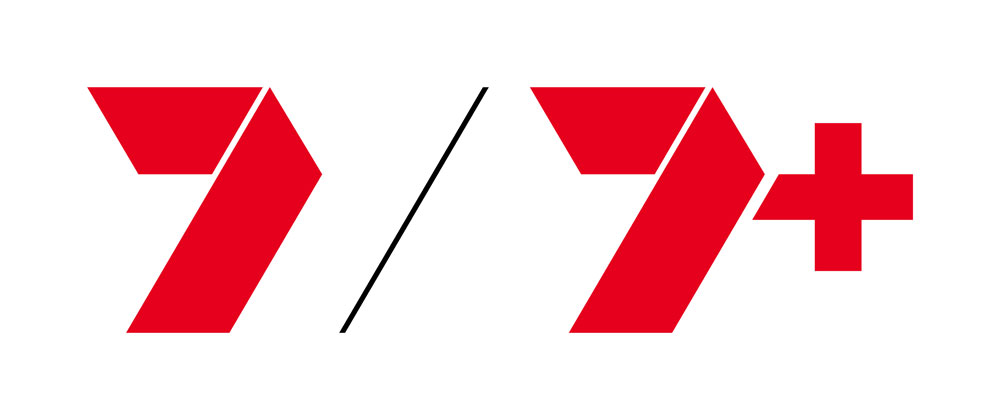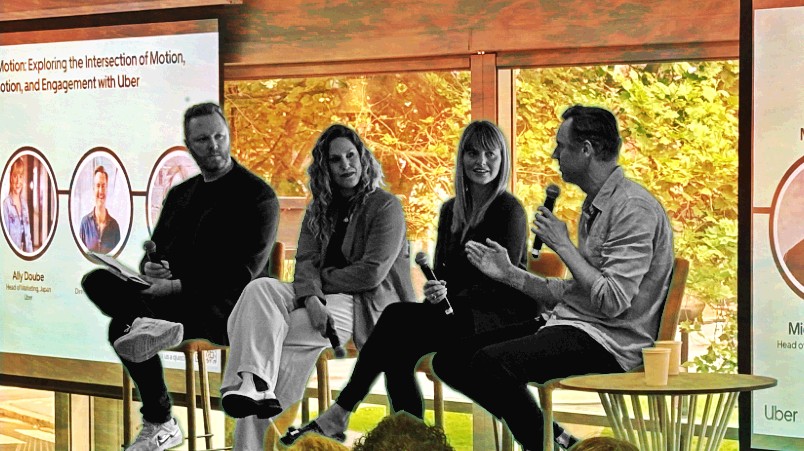‘We’re basing everything on attention’: Uber APAC marketing boss Andy Morley goes early on ad attention metrics, questions dominance of media reach and frequency
An Mi3 editorial series brought to you by
7 / 7plus


Uber attention (l-r): Uber's Head of Advertising Sales, Michael Levine; Special Group's Head of Strategy Celia Garforth; Ally Doube, Uber Japan Head of Marketing and Andy Morley, Uber APAC Director of Marketing
Uber’s marketing team used a SxSW session yesterday for a stealth upfronts pitch for its burgeoning Uber Ads business but it was APAC marketing boss Andy Morley’s unequivocal backing of attention metrics over long-entrenched industry convention for audience reach and frequency measures when choosing media that will likely trigger some navel gazing among his marketing peers – and their media agencies.
What you need to know:
- Brand marketing was a “really dirty word in Silicon Valley” when APAC marketing boss Andy Morley joined Uber in 2016. It was all about short-term performance marketing – if marketing was needed at all. “Growth hacking was a thing,” per Morley.
- The next year, Uber’s Australian arm binned that playbook and went big on old school channels like TV. It led to the widely acclaimed “Tonight I’ll be eating” ads that ultimately went global.
- Now Morley thinks the broader ad and media market is approaching another tipping point – with attention metrics usurping traditional reach and frequency measures.
- While the new metrics are far from perfect, Morley told SxSW Sydney that they are better than media planning’s status quo – and he’s all in.
Hack this
About six years ago Uber’s Australian marketing team broke with the Silicon Valley playbook on growth hacking – basically any tactic to acquire new customers is good except paid advertising – and did the unspeakable: it went big on investing in brand building for UberEats via high-impact, often dismissed traditional media like TV.
It led to the widely acclaimed “Tonight I’ll be eating” ads that launched in Australia as a test market for brand building for UberEats globally. And unlike the growth hacking, performance marketing bent that Uber used before its leap into building consumer “memory structures” via brand advertising – in Andy Morley’s words, emotive storytelling – the business took off.
“The journey for Uber into brand advertising I think is quite similar to many other big tech brands coming out of Silicon Valley,” the firm's APAC marketing chief said yesterday. “Brand marketing was a really dirty word in Silicon Valley. All of these brands and apps that you now use believed their products would just sell themselves and when they wanted to ramp up adoption they would invest heavily in performance marketing – because seemingly it would give them a cheap cost per acquisition. Growth hacking was a thing.”
Morley said when he landed at Uber in 2016, brand marketing was “definitely not the favourite child”, a position which was “really confronting for me coming from big brands like Johnnie Walker and Smirnoff, which were basically built out of advertising.”
After early efforts using referral promotions and a range of growth hacking tactics, Uber remained firmly stuck in third slot in the food delivery category. “We've gone from being that number three player to number one player and really started to accelerate away,” he said. “And that was a huge moment for us. Not only did it give us belief around the role brand marketing can play within Australia, but it also gave us a bit of a playbook for actually how we should be thinking about it globally.
"It wasn't just the biggest investment into brand marketing that we've done in Australia. It was the biggest investment that we've done globally. Instead of leaning into efficient performance and digital marketing, we were leaning into these big impact media. We were going from very functional messaging into emotional storytelling.”
If people aren't thinking about using [attention] as the centre point for their planning, then they're missing a huge opportunity because it will help you start to navigate towards the channels that are going to make the biggest impact – particularly at the top and middle of your funnel – much better than any of the previous metrics.
Uber attention
That might have been new territory for a Silicon Valley-born business but Morley yesterday appeared to even challenge his marketing peers that are already sold on the role of brand building to deliver business growth. He’s backing attention metrics as the next contrarian marketing practice applied to the rough and tumble of media planning and channel budget allocation.
Adelaide-based attention measurement start-up Amplified Intelligence and the UK’s Playground XYZ are developing what Morley argued will be the next level development to reach and frequency measurement, which governs much of how advertisers and their media agencies make decisions on where their ads should run.
To date, most marketers have had a watching brief on attention metrics, letting their media agencies do the early scoping work on efficacy. But Morley is in.
“It’s awesome there’s a language around this now because it’s been pretty frustrating for a long time,” he said. “We’ve been doing media planning and talking about reach and frequency in such a fragmented way. Thank god for Karen Nelson-Field [Amplified Intelligence founder] and thank god for everyone who's leaning into this now. We can have a much more scientific metric. But it's early. It's going to get to a much better place in the next 12-18 months. But if people aren't thinking about using this as the centre point for their planning, then they're missing a huge opportunity because it will help you start to navigate towards the channels that are going to make the biggest impact – particularly at the top and middle of your funnel – much better than any of the previous metrics. It's not perfect but it's much better than what we've been working with.”
Destination planning
There were caveats, however. Morley said most were still learning what the “actual unit economics around attention metrics were”. Reach and frequency had specific economics but time spent watching something, the impact that has and how it varies by media channel is still something the Uber team is getting to grips with.
“We're learning that every different channel is a little bit different and it's fuelling different models to help us get smarter about this – but it's probably still six to 12 months away from being very action orientated and usable in a perfect sense,” he said.
“Some people might be using it in more advanced ways at the moment but I think for us, it is the starting point for our language. But we've got more work to do to actually make sure that we're basing everything on attention as the centre point instead of reach and frequency.”
